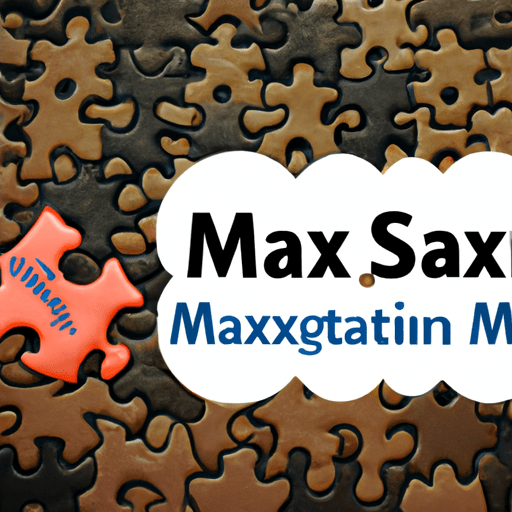Maximizing marketing efforts with software as a service

In today’s fast-paced business environment, maximizing marketing efforts has become a top priority for organizations of all sizes. The rise of software as a service (SaaS) has revolutionized the way businesses approach marketing strategies, offering an array of tools and solutions that can streamline processes, increase efficiency, and drive better results. Whether it’s managing customer relationships, automating email campaigns, analyzing customer data, or optimizing social media presence, SaaS platforms have become indispensable for businesses looking to stay ahead in their marketing game. With the right SaaS solutions, organizations can unlock the full potential of their marketing efforts, driving growth and achieving their business goals.
Maximizing marketing efforts with software as a service
I. Introduction to software as a service
Software as a service (SaaS) has revolutionized the way businesses operate in various industries, including marketing. SaaS refers to the cloud-based software delivery model where applications are hosted by a service provider and accessed by users over the internet. This model has gained popularity due to its cost-effectiveness, scalability, ease of use, and accessibility. In the marketing industry, SaaS has become a game-changer, allowing businesses to streamline their marketing efforts, automate processes, and gather valuable insights for effective decision-making.
II. Benefits of using software as a service for marketing
A. Cost-effectiveness
One of the key benefits of using SaaS for marketing is its cost-effectiveness. Instead of investing in expensive hardware, software licenses, and infrastructure maintenance, businesses can subscribe to SaaS solutions on a pay-as-you-go basis. This eliminates the need for upfront capital investments and allows businesses to allocate their budgets more strategically. Additionally, SaaS providers handle software updates and maintenance, reducing IT overhead costs for businesses.
B. Scalability and flexibility
SaaS solutions offer scalability and flexibility, allowing businesses to adapt to changing marketing needs. With SaaS, businesses can easily scale up or down their usage based on demand without the need for additional hardware or software installations. This flexibility enables businesses to respond quickly to market trends, launch new campaigns, and explore new marketing channels with ease.
C. Accessibility and remote work
With SaaS solutions, marketers can access their tools and data from anywhere with an internet connection. This accessibility is particularly beneficial for remote teams or businesses with multiple locations. Marketers can collaborate in real-time, share information, and work seamlessly across different devices and platforms. This level of accessibility enables faster decision-making, improves productivity, and enhances teamwork within marketing departments.
D. Automation and efficiency
SaaS solutions for marketing often come equipped with automation features that streamline repetitive tasks and improve efficiency. Marketers can automate email marketing campaigns, social media scheduling, lead generation, and other repetitive tasks, freeing up valuable time for more strategic activities. By automating these processes, marketers can focus on creating impactful content, analyzing data, and developing innovative marketing strategies.
E. Data analysis and insights
SaaS solutions for marketing provide advanced data analysis and reporting tools that allow businesses to gain valuable insights into their marketing efforts. These tools collect and analyze data from various marketing channels and consolidate them into easy-to-understand reports and dashboards. Marketers can track key performance indicators, identify trends, measure campaign effectiveness, and make data-driven decisions to optimize their marketing strategies.
III. Choosing the right software as a service for marketing
A. Assessing your marketing needs
Before selecting a SaaS solution for marketing, it is crucial to assess your specific marketing needs and objectives. Identify the key pain points or challenges in your current marketing processes and determine what features and functionalities are essential to address them. Consider factors such as budget, team size, required integrations, and the scalability of the solution.
B. Researching available options
Once you have assessed your marketing needs, conduct thorough research to identify the available SaaS options that align with your requirements. Consider factors such as the reputation and track record of the provider, customer reviews and testimonials, the range of features offered, and the level of customer support provided. It is also important to evaluate the user interface and ease of use of the software.
C. Considering integrations and compatibility
Another important factor to consider when choosing a SaaS solution for marketing is its compatibility with your existing marketing tools and systems. Determine whether the SaaS solution can integrate with your customer relationship management (CRM) software, email marketing tools, social media platforms, and other essential marketing systems. Seamless integrations will enable better data sharing, improved workflow, and a more holistic view of your marketing efforts.
IV. Implementing software as a service in your marketing strategy
A. Set clear goals and objectives
Before implementing a SaaS solution in your marketing strategy, it is important to set clear goals and objectives. Determine what you aim to achieve with the software, whether it is improving lead generation, increasing customer engagement, or optimizing advertising campaigns. Clear goals will help you align your marketing strategy with the capabilities of the SaaS solution and measure the success of your implementation.
B. Create a detailed implementation plan
To ensure a smooth implementation process, create a detailed plan that outlines the steps, resources, and timeline for integrating the SaaS solution into your marketing strategy. Consider factors such as data migration, user onboarding, training sessions, and coordination with other teams or departments. A well-defined implementation plan will minimize disruptions and ensure that all stakeholders are aligned throughout the process.
C. Train and educate your marketing team
Proper training and education are crucial for the successful adoption of a new SaaS solution in your marketing strategy. Provide your marketing team with the necessary training sessions and educational materials to familiarize them with the software’s features and functionalities. Encourage them to explore the software, experiment with different tools, and share best practices within the team. Regular training sessions and updates will keep your team up-to-date with the software’s capabilities and maximize their efficiency.
D. Monitor and measure performance
Once the SaaS solution is implemented in your marketing strategy, it is essential to continuously monitor and measure its performance. Regularly review key metrics and KPIs to assess the impact of the software on your marketing efforts. Use the data analysis and reporting tools provided by the SaaS solution to gain insights into your campaigns’ performance and make informed adjustments as needed. Monitoring and measuring performance will enable you to optimize your marketing efforts and achieve better results.
V. Examples of software as a service for marketing
A. Customer relationship management (CRM) software
CRM software is a popular SaaS solution for marketing that helps businesses manage customer relationships, track leads, and optimize sales processes. CRM solutions provide features such as contact management, lead nurturing, sales pipeline management, and customer analytics. By centralizing customer data and providing valuable insights, CRM software enhances marketing efficiency and enables personalized customer experiences.
B. Email marketing software
Email marketing software is a SaaS solution that allows businesses to automate, personalize, and analyze their email campaigns. These tools provide features like email templates, contact segmentation, A/B testing, and email analytics. Email marketing software helps businesses deliver targeted and engaging email campaigns, nurture leads, and measure the success of their email marketing efforts.
C. Social media management software
Social media management software simplifies the process of managing multiple social media accounts, scheduling posts, engaging with followers, and analyzing social media performance. These tools provide features like content calendars, social listening, post scheduling, and social analytics. Social media management software enables businesses to maintain a consistent social media presence, monitor brand mentions, and analyze the effectiveness of their social media marketing strategies.
D. Content management systems (CMS)
Content management systems are SaaS solutions that help businesses create, manage, and publish digital content. These tools provide features like content creation, editing, workflow management, and analytics. CMS solutions streamline content creation processes, enable collaboration among content creators, and facilitate the publishing of content across various channels.
E. Data analytics and reporting tools
Data analytics and reporting tools are essential SaaS solutions for marketing that help businesses collect, analyze, and visualize data from various marketing channels. These tools provide features like data dashboards, data visualization, data segmentation, and predictive analytics. Data analytics and reporting tools enable businesses to gain valuable insights into their marketing performance, identify trends, and make data-driven decisions for their marketing strategies.
VI. Best practices for optimizing marketing efforts with software as a service
A. Regularly update and maintain your software
To ensure optimal performance and security, it is important to regularly update and maintain your SaaS software. Stay up-to-date with the latest software versions and security patches provided by the SaaS provider. Regularly test and optimize the software’s configurations to ensure it aligns with your evolving marketing needs.
B. Continuously monitor and analyze data
Make data analysis and monitoring a regular practice in your marketing strategy. Continuously monitor key metrics and analyze data to identify trends, patterns, and opportunities for improvement. Use the data insights to refine your marketing campaigns, target specific customer segments, and optimize your marketing efforts for better results.
C. Integrate software tools for seamless workflows
Consider integrating different SaaS tools to create seamless workflows and maximize productivity. Explore automation and integration capabilities offered by your SaaS solutions to connect different marketing tools and systems. For example, integrate your CRM software with your email marketing software to streamline lead nurturing and conversion processes.
D. Collaborate with other departments
Marketing efforts are often interconnected with other departments within an organization. Collaborate with departments like sales, customer service, and IT to align marketing objectives and share information. By collaborating across departments, businesses can create cohesive marketing strategies, improve customer experiences, and maximize the impact of SaaS solutions.
E. Stay informed about new trends and technologies
The marketing landscape is continually evolving, and new trends and technologies emerge regularly. Stay informed about industry developments, attend conferences, and engage with marketing communities to stay updated on the latest trends and technologies. This knowledge will enable you to evaluate new SaaS tools and adopt innovative marketing strategies to stay ahead of the competition.
VII. Common challenges and how to overcome them
A. Integration issues
Integrating different SaaS tools can sometimes pose challenges, particularly when dealing with incompatible systems or complex data structures. To overcome integration issues, thoroughly evaluate the compatibility of different SaaS solutions and seek support from the SaaS providers or third-party integration services. Proper planning and consultation with experts can help mitigate integration challenges.
B. Data security and privacy concerns
Data security and privacy are critical considerations when using SaaS solutions for marketing. Thoroughly review the security measures and protocols implemented by the SaaS provider. Ensure that the provider complies with industry regulations and has robust security measures in place, such as encryption, access controls, and regular security audits. Implement data protection policies within your organization to reduce the risk of data breaches or unauthorized access.
C. Training and adoption by the marketing team
The successful adoption of SaaS solutions relies on proper training and education for the marketing team. Invest in comprehensive training sessions and educational resources to familiarize your team with the software’s features and functionalities. Encourage open communication, provide ongoing support, and create a culture of continuous learning to facilitate the adoption process.
D. Budget constraints
Budget constraints can sometimes limit the selection of SaaS solutions for marketing. Conduct a thorough cost-benefit analysis and consider long-term ROI when deciding on a SaaS solution. Prioritize essential features and functionalities that align with your marketing goals. Explore different pricing models, such as pay-as-you-go or tiered pricing, to find a solution that fits within your budget constraints.
VIII. Case studies: Successful implementation of software as a service in marketing
A. Company X: Using CRM software to streamline lead generation
Company X, a B2B tech company, successfully implemented CRM software to streamline its lead generation process. By centralizing customer data, automating lead nurturing workflows, and integrating CRM with other marketing tools, Company X improved the efficiency of its marketing team. The software enabled them to track leads, personalize communication, and measure the effectiveness of their marketing campaigns, resulting in a significant increase in qualified leads and improved conversion rates.
B. Company Y: Leveraging social media management software for brand visibility
Company Y, a fashion retailer, leveraged social media management software to enhance its brand visibility and engagement on social media platforms. By strategically scheduling and automating social media posts, monitoring brand mentions, and analyzing social media analytics, Company Y’s marketing team significantly improved its social media presence and grew its follower base. The software’s collaborative features also facilitated seamless coordination between the marketing team, influencers, and other stakeholders, resulting in increased brand awareness and customer engagement.
C. Company Z: Implementing data analytics tools for targeted marketing campaigns
Company Z, an e-commerce company, implemented data analytics tools to gather valuable insights and optimize its marketing campaigns. By analyzing customer segmentation data, purchase patterns, and campaign performance metrics, Company Z’s marketing team gained deep insights into their target audience. They were able to personalize marketing messages, recommend relevant products, and target specific customer segments with tailored campaigns. This data-driven approach led to improved customer engagement, increased conversion rates, and higher customer retention.
IX. Conclusion
Software as a service (SaaS) has become an indispensable tool for maximizing marketing efforts in today’s digital landscape. With its cost-effectiveness, scalability, accessibility, and automation capabilities, SaaS solutions offer businesses a range of benefits for their marketing strategies. By choosing the right SaaS solutions, implementing them effectively, and following best practices, businesses can optimize their marketing efforts, gain valuable insights, and achieve better results. Overcoming common challenges, staying informed about industry trends, and continuously improving the adoption of SaaS solutions will enable businesses to stay competitive and drive growth in their marketing endeavors.







